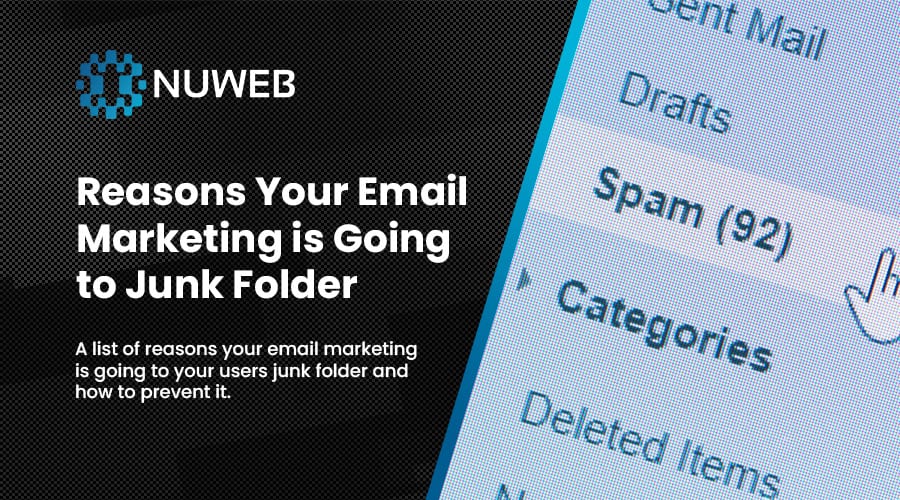
When developing your email marketing strategy you always want and expect that your email content will be delivered to your user’s inboxes – unfortunately, that is not always the case. There are several reasons that your email may never reach the inbox as it was already predestined for the spam or junk folder.
Below are the list of the most common reasons that your email is going past your user’s inboxes and straight into the junk folder:
Some spam filters will flag your campaigns if anyone with the same IP address has sent spam. Unfortunately, this is out of your control if using an email deployment service with a shared IP address for its users. This can be overcome by purchasing a dedicated IP address. A dedicated sending IP address will be assigned to you and you alone so you don’t have to worry about other users on the same IP causing issues for your business.
Sloppy code, extra HTML tags, and code pulled in from Microsoft Word can trigger spam filters. It is best to copy-and-paste without formatting into an HTML, or to type out your content using a WYSIWYG editor.
Are you allowing users the option to unsubscribe from your email? If not, you are violating the CAN-SPAM law. The CAN-SPAM Rule implements the Controlling the Assault of Non-Solicited Pornography and Marketing (CAN-SPAM) Act of 2003. This law sets standards for “commercial” email and gives recipients the right to have you stop sending certain emails to them – and imposes steep penalties for violations. If you have customers in Canada you will need to comply with Canada’s anti-spam legislation (CASL) which protects consumers and businesses from the misuse of digital technology, including spam and other electronic threats.
Private domains and some Internet Service Providers (ISPs) may have more aggressive spam filters that flag emails based on specific content or images. Unfortunately, this is not something you can control as each user has a different internet service provider.
All of your subscribers should have opted-in to your list and be familiar with you. Is the email list purchased? If so, you may be in trouble. Purchased email lists sound great, but if your users did not opt-in to receive email from you, you could be violating the CAN-SPAM Law. Opt-in users are 98x more likely to interact with your email content than those from a purchased list – so save your money and grow your list organically through website forms, lead generation, and offline collection.
Not only do email service providers keep an internal blacklist of domains and companies that they will automatically filter out of the inbox, but there are also several international email blacklists that email service providers also refer to for determining spam email. Check if your domain is blacklisted, and if so, you will want to address this immediately by hiring a web developer or an IT company to help as it could not only prevent email from reaching your user’s inboxes but also your own.
In recent years, email service providers have started tracking domain reputation as well. This created a bit of a struggle for many companies who had avoided the spam or junk folder delivery by consistently switching servers and IP addresses when sending an email. Most email service providers at this point have developed software that also identifies the domain associated with the email and assigns a spam score or penalty based on that domain’s email history. This can be avoided by connecting up DomainKeys Identified Mail or (DKIM) into a domain’s DNS settings.
Another more recent development in spam filters is to apply a score based on the activity of your email list. If your emails regularly get incredibly small open rates or are deleted without being opened, then that indicates to email service providers that you are sending low-quality email that is potentially unsolicited. While it won’t automatically get you blocked from the inbox, it will combine with other scores that may reflect unfavorably on you.
The content of your email is a significant factor in making it through spam filters. Image use, text content, proper grammar, and subject line can all create spam problems for you. Writing and designing email has to be as much about deliverability as it is about email performance.
One of the greatest marks against you if you’re having trouble getting into the inbox will be if your email content has been previously flagged as spam by your subscribers. While a certain number of spam complaints will be unavoidable, if the number begins to escalate you can find yourself removed from a white list and watching your email land in the spam or junk folder without any hope of remedying the problem in the short term.
Last updated on by Joshua Holdeman
